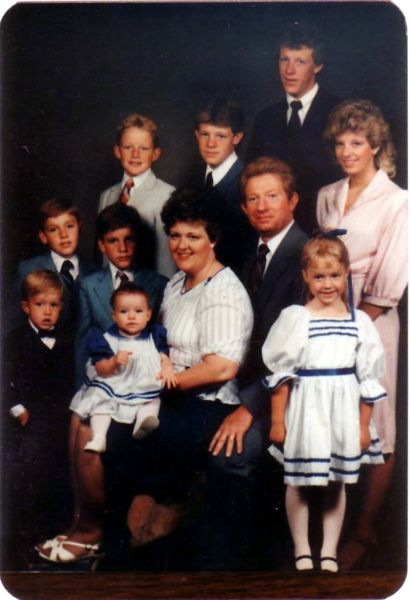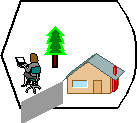TV Production
Contents
Television Production
- Lesson 1 :Television Production
- [[Lesson 2: Talk shows]
content 3:B/C :UNIT ONE
[[
Unit one: Safety at Building Sites.
Unit Outline.:
Section 1: What is an accident?
Section 2: Types of accidents and How they occur.
Section 3: Prevention of accidents.
Section 4 : Effects of accidents at the building sites.
Overview
You are welcome to the course on Block or Bricklaying and Concreting.This course will help you to learn and become a skilled person who can work wiyh blocks, bricks and concrete. There are 15 units in the 1st module of the course.The first unit will introduce you to the possible accidents ,how they occur and how you can avoid them. I hope you will study this lesson very carefully so you can avoid accidents that may occur at building sites.
Objectives
After reading this unit, you will be able to: .#Explain what is meanr by an accident at building site.
- List types of accidents and how they occur.
- Describe how accidents can be avoided.
- List the results of accidents.
- Identify safety measures to be observed at building site.
- Identify safety measures to be observed at building sites
Unit 1.1
WHAT IS AN ACCIDENT?
Can you define an accident?
Good, try.
An accident can be defined as an unexpected happening which:
- causes injury to somebody
- damages machines and the environments
Unit 1.2
=Types of Accidents and how they Occur= I am sureyou have seen accidents happen.Accidents do not just happen; they are caused by someone or by something. In this unit, we are concerned with accidents at building sites. Accidents generally occur when:
• Safety rules and regulations are not observed.
• Workers are not given enough orientation or guidance for their work.
• We fail to use the right tools for right jobs.
• We use faulty tools and machines.
Activity:1
List four common accidents that occur at building sites in your community in the space provided below.
i)……………………………………………………………………………………………… . ii)………………………………………………………………………………………………
iii)…………………………………………………………………………………………….
. iv)……………………………………………………………………………………………..
ANSWERS:
Some accidents happen at building sites are caused by:
- kicking against broken pieces of blocks or bricks
- stepping on protruding nails
- slipping on smooth surfaces
- throwing tools on the ground at the site
- falling from heights, for example falling from a scaffold
We shall now take a closer look at each type of accident mentioned

=Kicking against broken pieces of blocks
When laying blocks and bricks,you will be expected to cut some into smaller pieces
.
1.2.1 Kicking against broken pieces of block When laying blocks and bricks, you will be expected to cut some into pieces. Sometimes, some craftsmen leave pieces of blocks/bricks around and do no park them at an appropriate place. Such a practice can cause accidents. If you step on a piece of block, it can turn you over, and hurt you. You should therefore pack all broken pieces at safe corners to avoid stepping over and wounding yourself. When your working area is free from broken pieces and cutovers, you will be free to work faster and make your movement on site very smooth.
Activity 1
a) State two reasons why broken pieces must be well parked on a building site.
b) What measures will you take to ensure an accident-free site while laying bricks or blocks?
1.2.2 Stepping on protruding nails In preparing to case or pour concrete, you are sometimes expected to pour into a mould or formwork. The moulds or formwork are formed by boards and planks. Nails are used to get the mould in place. You should note that where a very good finish is required, you could use steel to replace wood in making the formwork.
When the concrete is set and dried, you will be expected to remove the boards from the concrete. The boards always have nails. If you do not put away the boards with the nails properly and store them well, they can cause accidents. This can happen when you forget and step on the protruding nails.
To avoid this type of accident, you are advised to follow the instructions below. i. Remove nails immediately the boards are removed from the concrete. ii. Pack the boards properly at an appropriate place and secure them together by nailing battens to them. iii. Collect left over nails lying around.
Activity 2
a) What materials are used for formworks?
b) Nails used for formwork must be removed immediately boards are removed from concrete. True or False?
c) List two steps that you can take to avoid stepping on protruding nails.
1.2.3 Slipping on smooth surfaces Let us examine some ways in which slipping on smooth surfaces may occur at the building site. i) On big sites, work is usually done by machines that use diesel. The machines can develop faults, which you will need no repair. You are advised to ask the mechanic not to do the repairs on a smooth surface. This is so because if oil spills over the smooth surface during the repair, the place becomes slippery. If you should walk over it, you can fall, and hurt yourself. ii) When floor screeds are trowelled too smoothly, and water is poured over, the floor becomes so slippery that when you walk over it, you can slip and fall. Floors are screeded with mortar using the trowel. iii) Some bath houses are also finished with glazed floor tiles which are very smooth on the surface. It is easy to fall when you walk on such a surface. When such tiles come in contact with soapy water, they become slippery and can make you fall over if care is not taken.
To avoid all such accidents, take the following steps: • Send broken down machines to the workshop to be fixed there. • Clean the oil on the floor if the fixing is done on a smooth surface. • Do not walk on smooth and wet floors.
Activity 3
a) State two causes of slipping at the building site.
b) What measures will you take to prevent such accidents?
1.2.4 Throwing tools on the site You are going to work with a lot of tools. Some of the tools have sharp edges which can cut or pierce the body. Tools such as the pointed chisel, the flat cold chisel, and line and pins can be dangerous on the site when they are thrown about. The club hammer, cutting tools such as the bolster and the brick hammer can also fall and hurt you.
You may be tempted to throw tools around when you are in a hurry to complete a piece of work early. This action is very dangerous because if the tool slips of the hand, it could fall and hurt you. The accident may rather make the job delay and become more expensive. To avoid accidents on the building site, you should not throw tools around.
Activity 4 a) What would you tell a friend who throws a tool at you? b) Tools thrown to colleagues accelerate working pace. True or False?
1.2.5 Falling from a height When you are working on a building site and at a height above shoulder level, you need a support to enable you reach the working height. This support in height is either made of wood or metal. This structure is called a scaffold. A scaffold can collapse if it is not: • securely positioned • properly supported • tightly nailed • properly lapped in case of foot boards • erected with good and strong materials.
To prevent accidents as a result of falling from height, care must be taken in the erection of scaffolds. If scaffolds are properly erected, a lot of accidents could be avoided at the workplace.
Some safety measure you should take regarding the erection of scaffold are listed below. • Scaffolds are to be securely positioned, secured and be upright • Scaffolds must be properly supported • Nailing should be done properly • Working platforms must be closely boarded and lapped properly • Guard rail must be placed at the correct heights • Only qualified persons must erect and dismantle scaffolds
These measures are to be strictly followed to avoid accidents on the building site.
Activity 5 a) What is scaffold? b) What is a working platform? c) State five causes that result in the collapse of scaffolds. d) List three safety measures that should be taken to protect scaffolds from falling.
1.3 Prevention of Accidents We have seen that accidents occur on building sites as a result of certain bad practices. We also discussed what harm accidents can do to you and to others on the job. You are therefore advised to prevent accidents on site by observing all safety regulations. You should also handle and store materials and tools safely.
To avoid accidents at building site: • wear protective clothing on sites. • use ladders that are properly secured. • do not use a defective machine and equipment. • provide timbering in loose soil. This means that you should support the sides of a trench properly during excavation for concrete. • remove or strike formwork only when concrete has hardened. • carry out a thorough inspection of the scaffold before use. • observe warning notices at the building site.
1.4 Effects of Accidents on the Building Site Accidents on the building sites have some effects on both workers and the company. Take paper and pencil and list at least two effects on the worker, two on the other workers and two on the company.
Now, let us look at some of the effects and compare then with those you listed.
1.4.1 Effects on the victim and his family All accidents have effects on the victim and his/her family. The effects on the victim include: a) suffers pain and shock. b) loses some income as a result of injuries resulting from the accident. c) incurs extra expenses in the treatment of his/her injuries.
1.4.2 Effects on the company There could be several effects of accidents at the building site on the company when employed workers get injured. For example:
• the victim may have to be transported to the hospital • time could be lost in repairing the plant if the damage is extensive • a delay could occur in the progress or work • there could be additional cost in training a new person to replace the injured one • time is needed to re-plan the work • morale of the other workers could be affected
Unit Summary
In Unit 1 you were introduced to safety on building sites. You have been exposed to various forms of accidents that are likely to occur if adequate steps are not taken to prevent them. Types of accidents and appropriate methods of avoiding them have been outlined. We identified safety measures, their effects and how they can be observed.

